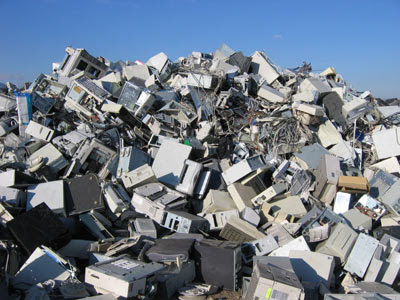http://ecomoney.eu/puppy/recycle/
Simply burn the CD, and invoke the installer with "puppy pfix=ram" to start the installer.
Origional Post

Computer waste is a big problem, old computers contain dangerous chemicals such as lead, mercury, arsenic, PCB's etc. This can cause Cancer, miscarriage, loss of land for agriculture, amongst many other nasties in the primarily third world countries which western e-waste ends up. Puppy Linux, technically, allows a computer to remain useful for 2/3 times as long as a Windoze computer...whos "business model" encourages early obsolescence in order to increase their profit margins.BarryK wrote: Puppy Linux Mission Statement:
* Puppy will easily install to.........hard drive media
....
* Puppy will be extremely friendly for Linux newbies
....
* Puppy will just work, no hassles
.......
* Puppy will breathe new life into old PCs
Having recently helped a friend start an ebay laptop recycling operation, I realized just how difficult puppy is to install to the "Linux Newbie". Having advanced cd/usb/zip install options is all very well, but if it means that new users cannot do a basic install on an ancient dedicated computer to try it out, how will they ever gain the linux skills to progress to becoming a more advanced linux user?
Recently, I read Catdudes excellent, but necessarily long, tutorial on installing Puppy linux on a dedicated computer...
http://www.murga-linux.com/puppy/viewtopic.php?t=29653
"Doesnt work properly" and "cant be worked easily" amounts to the same thing IRL....could puppy do better on this score? I think so

Proposed Solution
Code: Select all
puppy pfix=recycleRecycling operations for charity or to avoid landfill (which many people on here use puppy for) need a way to recycle their old computer donations with a minimum of training. For them TIME is their most valuable resource, and EXPERTISE is a shortage. The VAST majority of computers just have a single hard drive, and on older ones the data already on them is expendable....in fact its often very welcome to be able to wipe this off easily before giving the computer to a new owner. Gparted/grub config/Puppy universal installer is "overkill" for this.
Puppy linux also has a "lockout" problem which makes it extremely difficult to recycle very old computers with it. To boot puppy in liveCD mode you need at least 48mb of ram, to be able start the (very complicated) installer. Puppy has been reported to work on just 24mb or RAM. 32mb is a very common figure.
An install routine in "init", triggered by "pfix=recycle", which runs before the pup_4xx is loaded into RAM would make recycling a computer very fast (and worthwhile), and bypass the minimum ram requirement on very old hardware.
The script might have these steps...
1. Explain to the user/recycler what was about to happen (all data wiped), and confirm
2. Format 2 partitions - a 250mb swap, and the reminder to ext2
3. set the partition "bootable", or write to the MBR
4. Install GRUB to the hard disk
5. Copy the initrd.gz, vmlinuz, files to the hard disk from the CD
6. Ask the user to choose between a (well explained) choice of FULL or FRUGAL install, and perhaps even check the available RAM to give a recommendation.
7. If FRUGAL, copy the pup_4xx.sfs from the CD to the ext2 partition, if FULL, extract it to it.
8. Create a grub menu.lst files *with the file locations in the right place*
9. Eject the CD (this would be "nice") and ask the user to reboot
Much of the code for this already exists in the existing rc.shutdown scripts/universal installer.
My own Bash coding skills are very limited, but I do have access to many unskilled "test pilots" and a lot of older kit for testing this routine. I could also provide testing, by asking for it to be included it in the HanSamBen (which would supply top quality educational software to this older kit) where it would be very beneficial, and also including it in the puppy 2.14ce "Phoenix" project I am returning to co-ordinating.
Thanks in advance for your help.


